12 Delightful Flowers That Start with D + Growing Guide Charts

This post follows our research editorial guidelines.

Whether they’re dazzling or demure, delicate or dramatic, clever gardeners delight in the dreamy displays of delectable flowers. With diligent care, decorative dividends are delivered to decorate and draw desirable wildlife to their domains. It’s not difficult to derive delight from such deliberate designs.

I’m drawing down the list of my most desired flowering plants in alphabetical order. Today the destination is the letter ‘d’. Delightful!
Quickly Find The Flower You’re Looking For That Starts With D
1. Daffodil (Narcissus spp.)
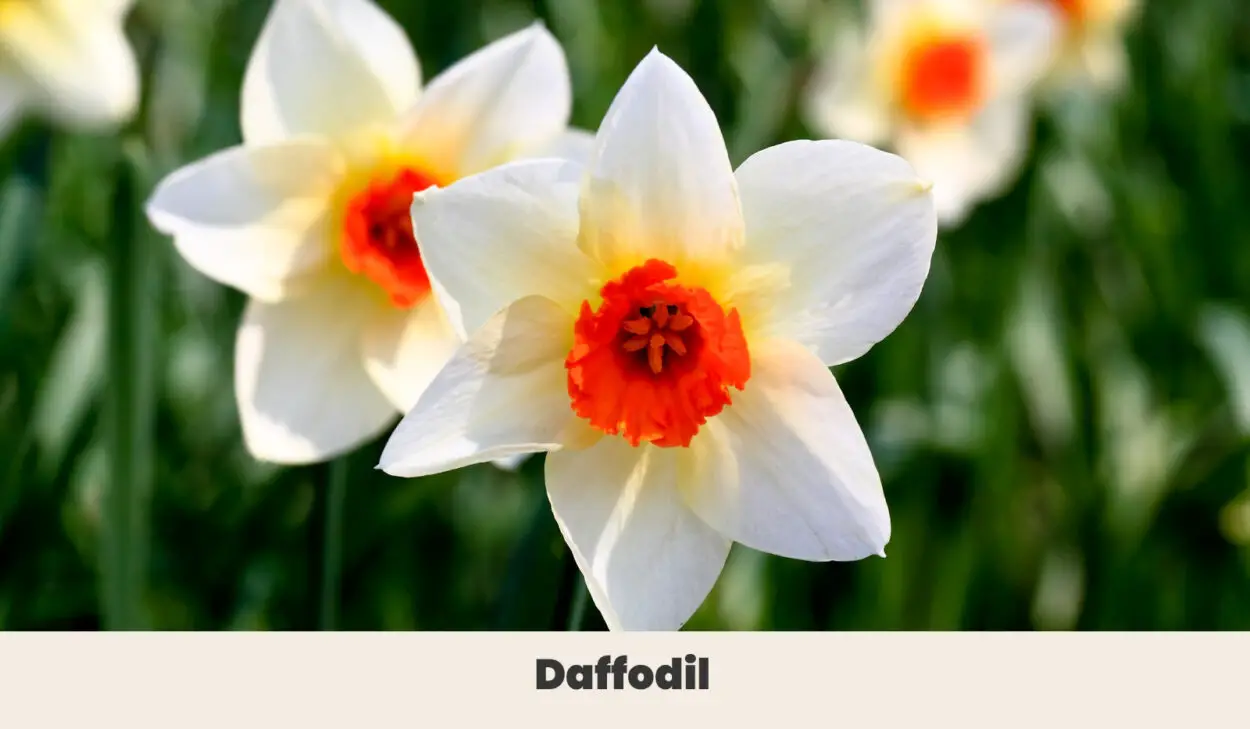
Playful golden daffodils are a popular flower, both in fresh arrangements and as a garden feature. They grow from a hardy bulb that will happily remain in the soil for years and flower reliably with little effort on the gardener’s behalf. I’m partial to the traditional sunny yellow, but different cultivars produce flowers from white through yellow to pink and red.
| Botanical Name: | Narcissus spp. |
| Growth Rate: | Fast |
| Native Range: | Africa, Europe, Eurasia, China and Japan |
| Hardiness Zones: | 4 to 8 |
| Soil Needs: | Organically rich soils of all types when drainage needs are met |
| Exposure: | Full sun to partial shade |
| Blooming Period: | Late winter to spring |
2. Dame’s Rocket (Hesperis matronalis)
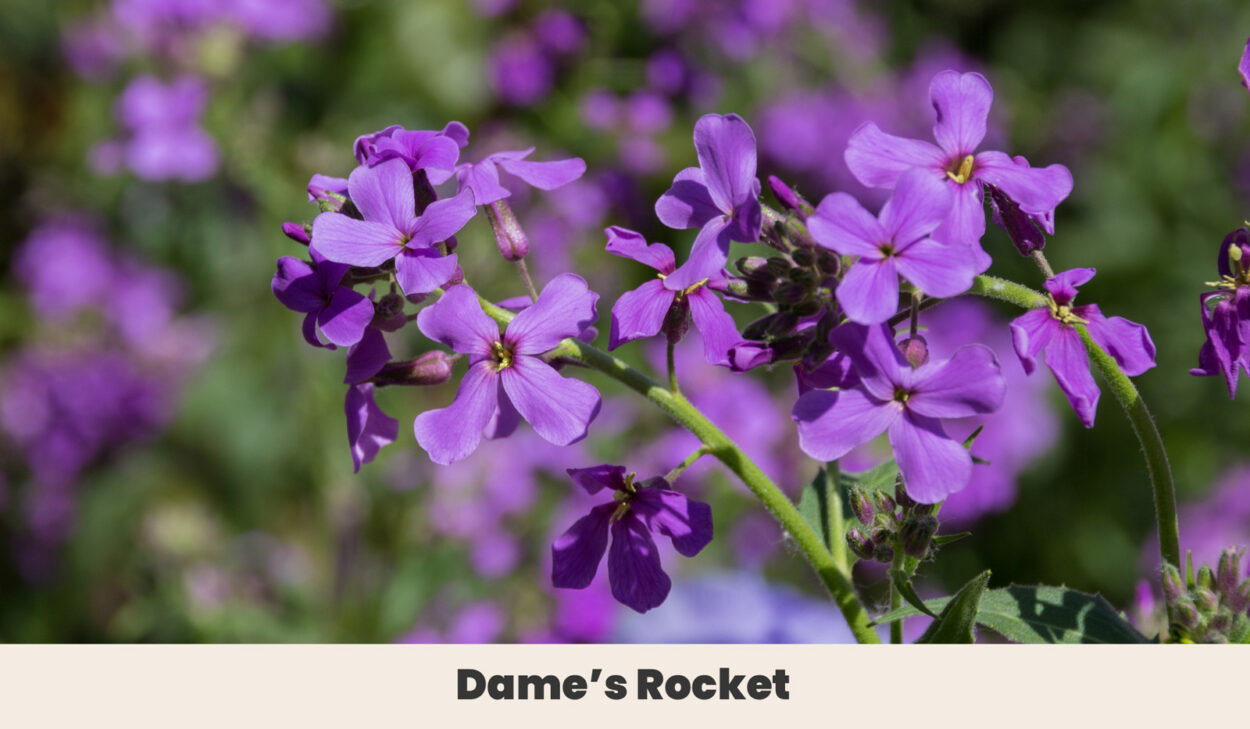
The dainty purple blooms of the dame’s rocket release their sweet perfume in the evenings, spreading a clove-like perfume that suffuses the night air. It’s ridiculously easy to grow, forming a low shrub that flowers extensively and abundantly for months at a time.
It also self-seeds and spreads readily, so be mindful of where you plant it. It’s considered an invasive plant in much of the continental United States, taking over wildflower meadows and crowding out native plants.
| Botanical Name: | Hesperis matronalis |
| Growth Rate: | Fast |
| Native Range: | Europe |
| Hardiness Zones: | 3a to 8b |
| Soil Needs: | Well-draining clay, loam, and sand |
| Exposure: | Full sun to partial shade |
| Blooming Period: | Spring |
3. Dutch Iris (Iris hollandia)

Bred for its gorgeous multicolored blooms, the Dutch Iris is a carefully developed hybrid of Spanish and Moroccan varieties. The results are stunning, with gorgeous architectural blooms sporting the characteristic multi-colored iris bloom in a variety of patterns and hues. Classic white, purple and gold give way to purples, black and burgundy. Like most bulbs they make spectacular seasonal displays in containers and can be left in beds for years with little work needed to keep them in good health.
| Botanical Name: | Iris hollandia |
| Growth Rate: | Fast |
| Native Range: | Man-made hybrid |
| Hardiness Zones: | 6 to 9 |
| Soil Needs: | Organically rich, well-draining soil of most types |
| Exposure: | Full sun |
| Blooming Period: | Spring |
4. Daisy (Bellis perennis)

Also known as the English or common daisy, there’s nothing workaday about this simple but sweet blossom. It’s a flower that has come to mean innocence, childhood, and joy, and even as an adult they still inspire feelings of happiness and simple pleasure. Akin to many other flowers, pollinators love them, so they’re a great easy-care option to bring useful insects to your garden.
| Botanical Name: | Bellis perennis |
| Growth Rate: | Fast |
| Native Range: | Europe, north Africa, western Asia |
| Hardiness Zones: | 4 to 8 |
| Soil Needs: | Well-draining, organically rich soils of all types |
| Exposure: | Full sun to partial shade |
| Blooming Period: | Spring to summer |
5. Dew Flower (Drosanthemum spp.)

The dew flower is a succulent, from a group of ice plants native to South Africa. There’s a few popular species, but all share the same soft, fuzzy leaves and bright sun-shaped flowers. Depending on the species and cultivar you may be treated to bright purple, red, or soft pinks and lavender. Like most succulents, they’re very drought hardy and are a good choice for xeriscape gardens.
| Botanical Name: | Drosanthemum spp. |
| Growth Rate: | Fast |
| Native Range: | South Africa |
| Hardiness Zones: | 9 to 11 |
| Soil Needs: | Free draining |
| Exposure: | Full sun to partial shade |
| Blooming Period: | Spring to summer |
6. Daylily (Hemerocallis spp.)
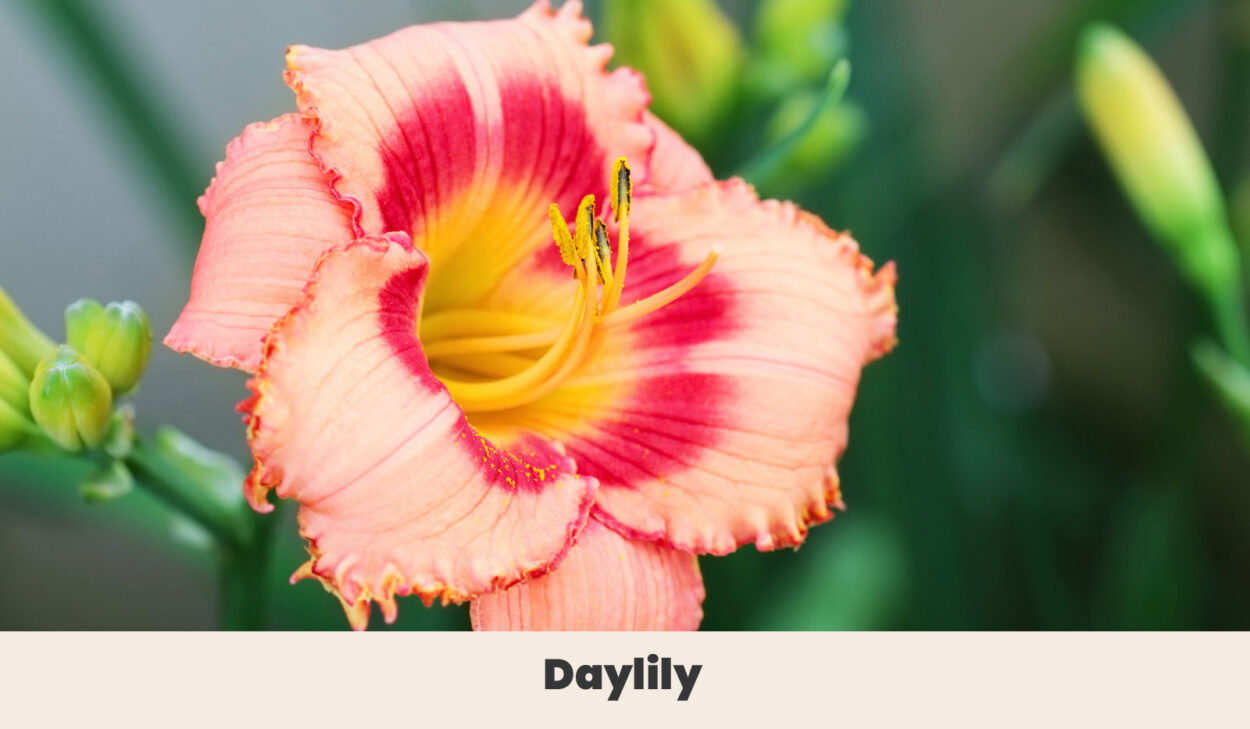
The short-lived golden blooms of the day lily hold a secret – they aren’t a lily at all! Despite appearances, they’re totally unrelated and belong to a genus all their own.
They’ve been cultivated with similar passion and just like lilies, they grow from a bulb with flowers in a range of engaging hues from pink to yellow flowers. Unlike lilies, however, the day lily can be eaten fresh as a salad green or added to cooked food, where they taste somewhat like asparagus or zucchini flowers.
| Botanical Name: | Hemerocallis spp. |
| Growth Rate: | Moderate |
| Native Range: | Asia, Central Europe |
| Hardiness Zones: | 3 to 10 |
| Soil Needs: | Organically rich loams; will tolerate sand or clay |
| Exposure: | Full sun to partial shade |
| Blooming Period: | Spring to late summer |
7. Dutchman’s Breeches (Dicentra cucullaria)
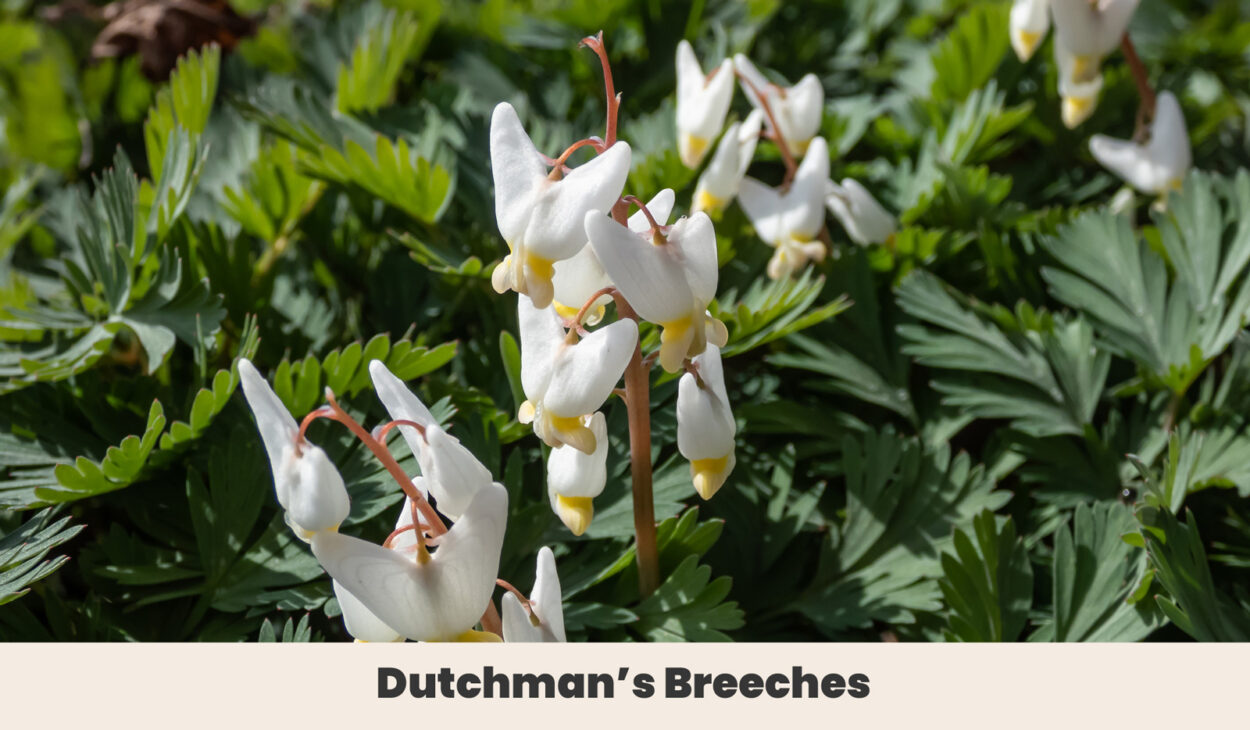
Few flowers are as unusual to behold as the Dutchman’s Breeches. The plant itself is a low-growing, almost ferny ground cover, but the flowers themselves are plump y-shaped blooms that sprout on long, erect stems.
They resemble the pantaloons favored by Dutch settlers and give the plant its name. They’re native to the Americas and can provide a punchy and unusual addition to your wildflower garden, where they are much loved by bees, butterflies, and songbirds.
| Botanical Name: | Dicentra cucullaria |
| Growth Rate: | Moderate |
| Native Range: | North and Northeastern United States |
| Hardiness Zones: | 3a to 7b |
| Soil Needs: | Moist, well-draining organically rich loam or clay |
| Exposure: | Partial shade |
| Blooming Period: | Spring |
8. Dutchman’s Pipe (Aristolochia spp.)
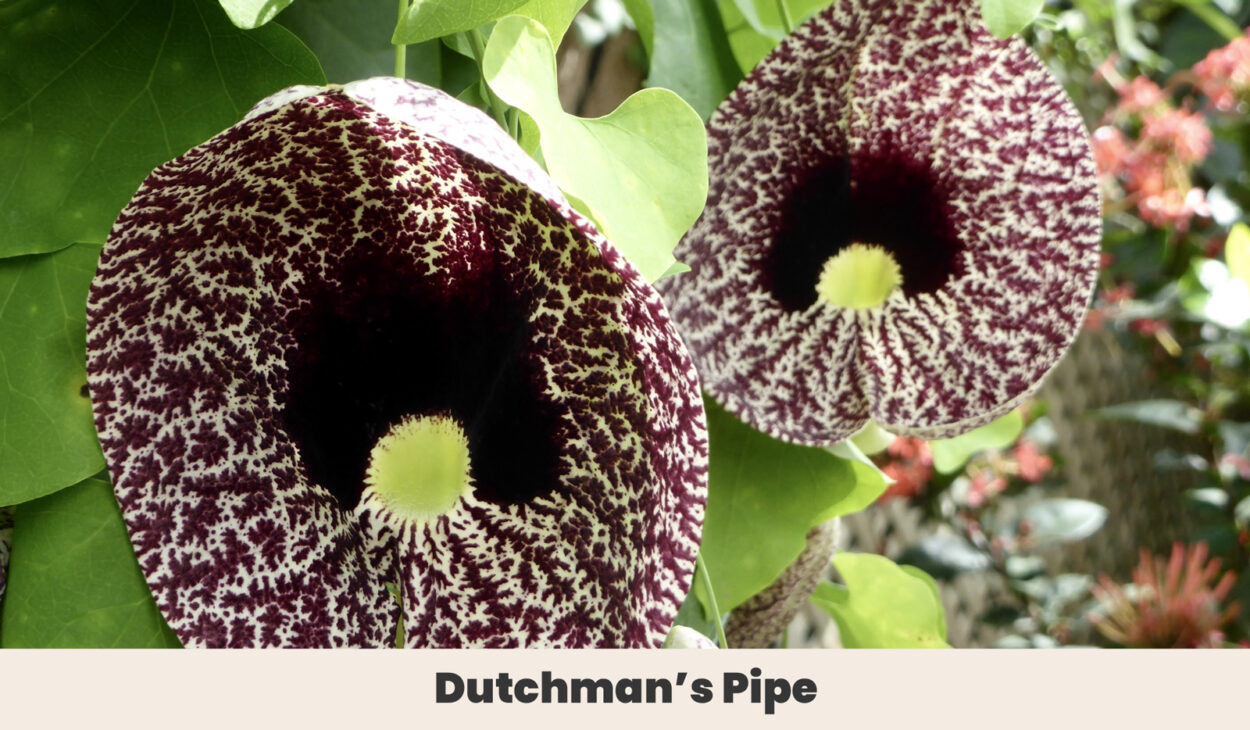
Dutchman’s Pipe is a vigorous vine that produces unique flowers. This flower is known by a few species, ranging from the delicate American native A. macrophylla to the chunky South American variety A.littoralis.
Most produce blooms that feature a broad disc, speckled like a leopard, with a contrasting throat in deep burgundy, gold or cream. Choose your cultivar with care. While some provide valuable support for native butterflies, others are invasive and can overgrow even very large trees with their heart-shaped leaves, smothering them entirely.
| Botanical Name: | Aristolochia spp |
| Growth Rate: | Fast |
| Native Range: | North and South America |
| Hardiness Zones: | 2 to 11 |
| Soil Needs: | Well-draining, moist organically rich soil |
| Exposure: | Full sun to partial shade |
| Blooming Period: | Spring to summer |
9. Dog Rose (Rosa canina)
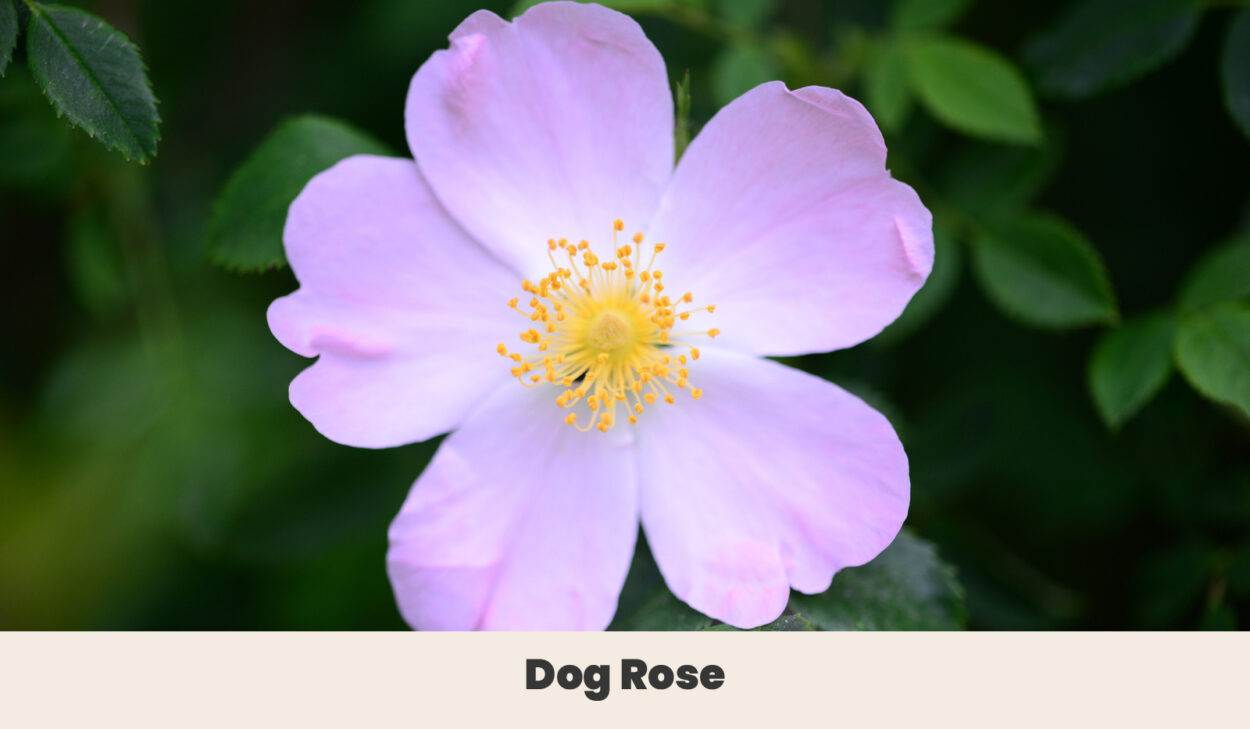
The dog rose is as loyal and steadfast as the name suggests. It’s a hardy shrub that can reach up to nine feet (3m) dappled with sweet cottage-style roses in shades of delicate lemon yellow and pink. It’s tough and grows so readily that it sometimes breaks out of gardens and takes over pastureland, where it invites butterflies and bees to dine on its blowsy blooms.
| Botanical Name: | Rosa canina |
| Growth Rate: | Fast |
| Native Range: | Europe, Central Asia |
| Hardiness Zones: | 3 to 7 |
| Soil Needs: | Tolerates most soils if drainage needs are met |
| Exposure: | Full sun to partial shade |
| Blooming Period: | Summer |
10. Dogwood (Cornus Florida)
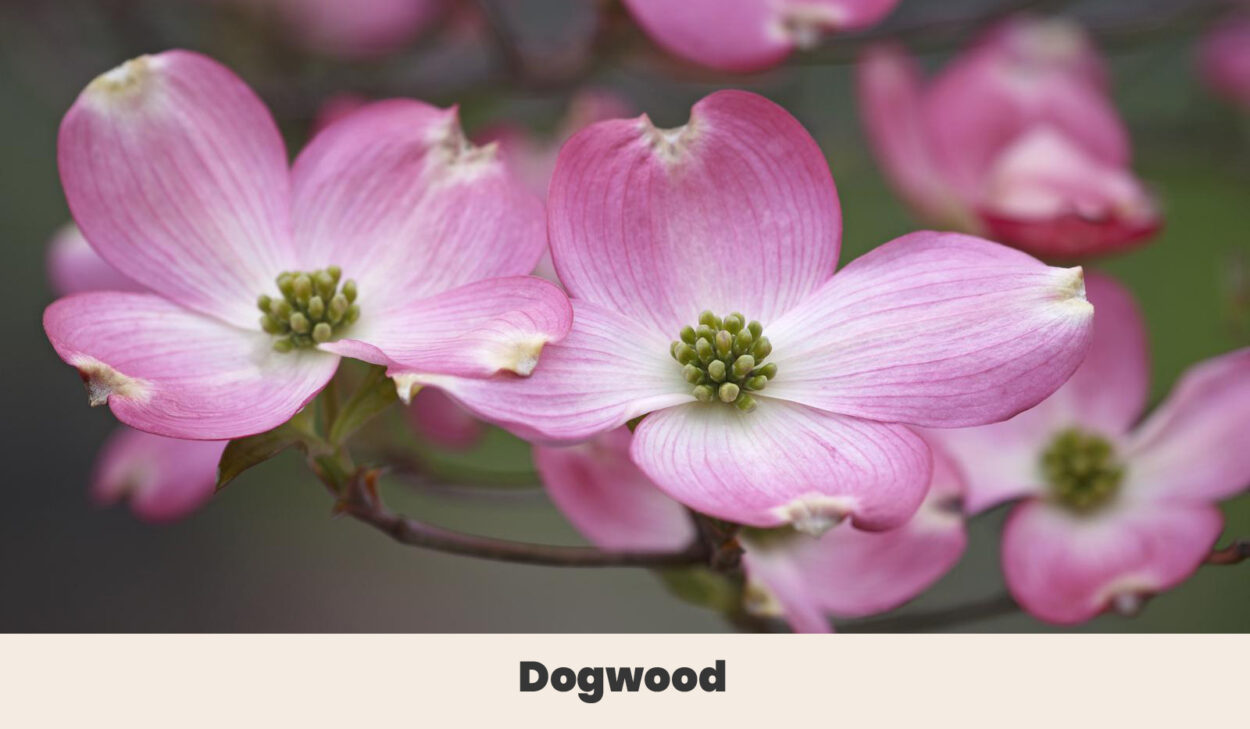
Few trees in the United States are as ecologically important as the dogwood. A common pink flowering tree at the edges of woodlands, its flowers feed beneficial insects through the spring and its red fruit sustains songbirds and other woodland creatures through the winter.
They can be tricky to establish, but once in place, they will reward you with pink and red spring flowers and a fall show of golden and scarlet leaves.
| Botanical Name: | Cornus florida |
| Growth Rate: | Slow |
| Native Range: | Eastern United states |
| Hardiness Zones: | 5a to 9b |
| Soil Needs: | Well-draining, organically rich soil |
| Exposure: | Full sun to partial shade |
| Blooming Period: | Spring |
11. Desert Lily (Hesperocallis undulate)

The desert lily is a plant of great contrast. It’s a low-growing desert specialist with lean, strappy leaves that always make me think of lizard tails or dragon wings. Its blooms on the other hand are delicate trumpets in soft shades of white and pale pink. The bulbs are edible and have a flavor reminiscent of garlic.
| Botanical Name: | Hesperocallis undulata |
| Growth Rate: | Slow |
| Native Range: | Southwestern United States |
| Hardiness Zones: | 8 to 11 |
| Soil Needs: | Dry, sandy, or rocky soil |
| Exposure: | Full sun |
| Blooming Period: | Spring |
12. Desert Rose (Adenium obesum)
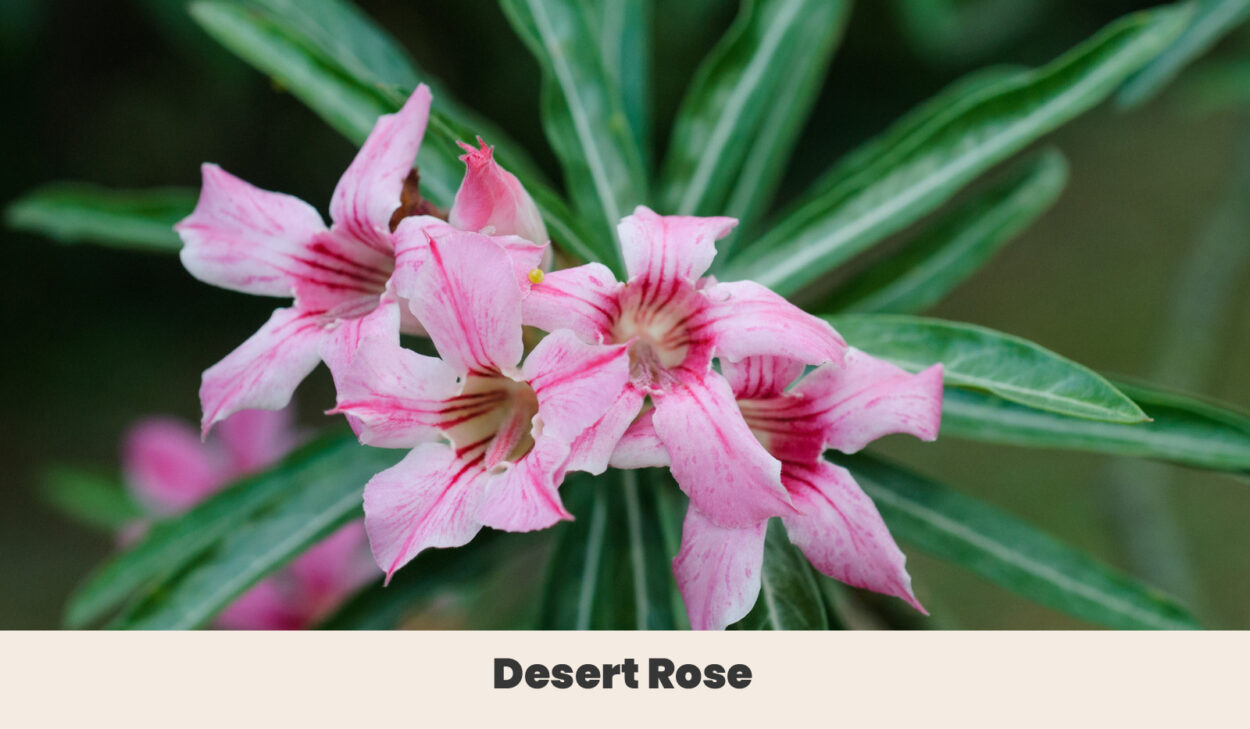
As the name would suggest, the desert rose is a hardy specialist of hot, dry regions. For most, it’s grown as a houseplant, with its roots washed free of soil to expose its twisting, architectural form. The plant produces an abundance of white, pink, and red trumpet-like flowers, often so many it seems miraculous.
| Botanical Name: | Adenium obesum |
| Growth Rate: | Slow |
| Native Range: | Sub Saharan Africa, Asia |
| Hardiness Zones: | 10b to 12 |
| Soil Needs: | Well-draining sandy or rocky soils |
| Exposure: | Full sun |
| Blooming Period: | Summer |
Final thoughts
Don’t delay in deciding what dreamy or dazzling flower you most definitely desire. The diligent and deliberate design delivers delightful, delicate displays. Dare to design dizzying drama or delicate demonstrations.

